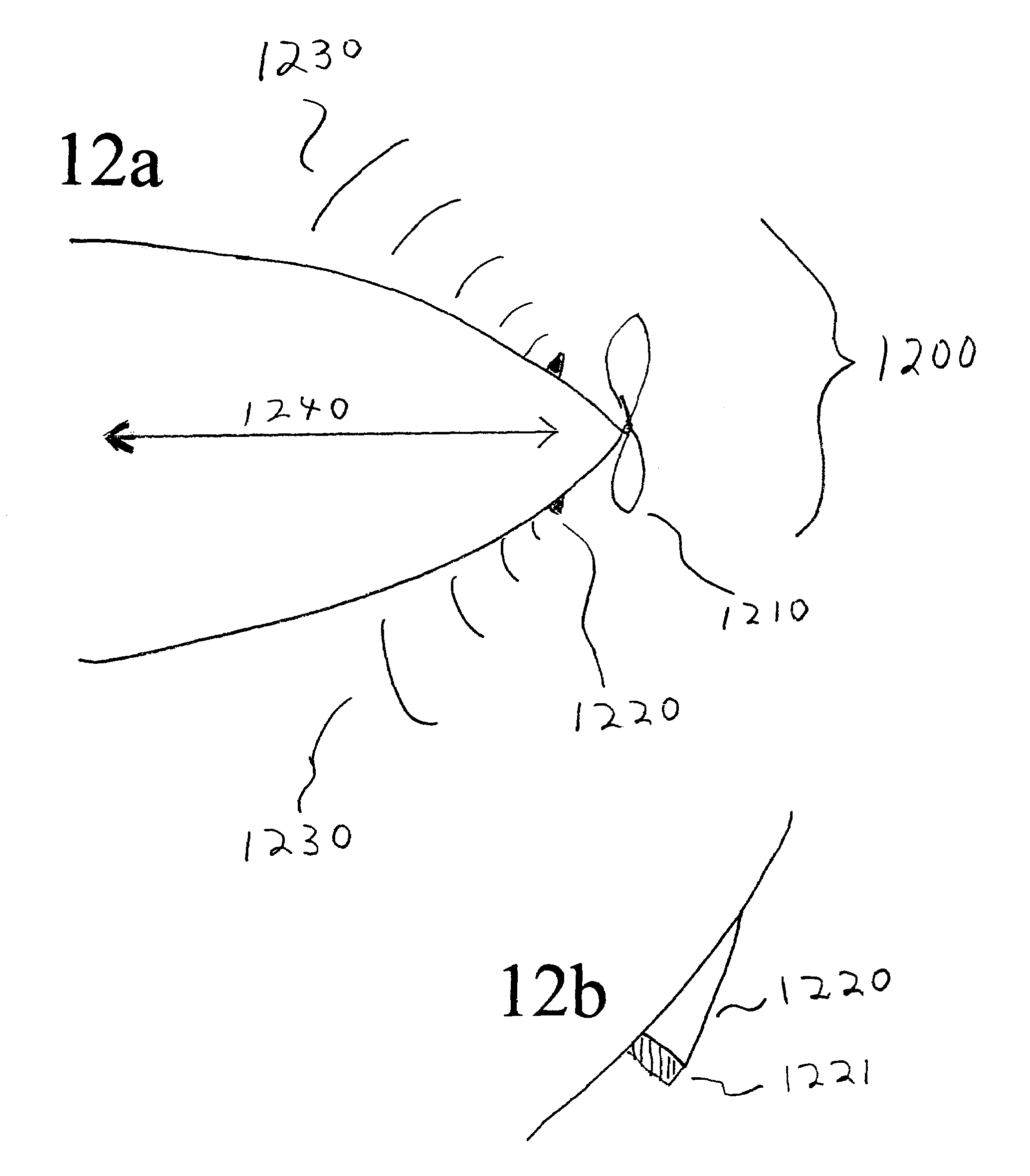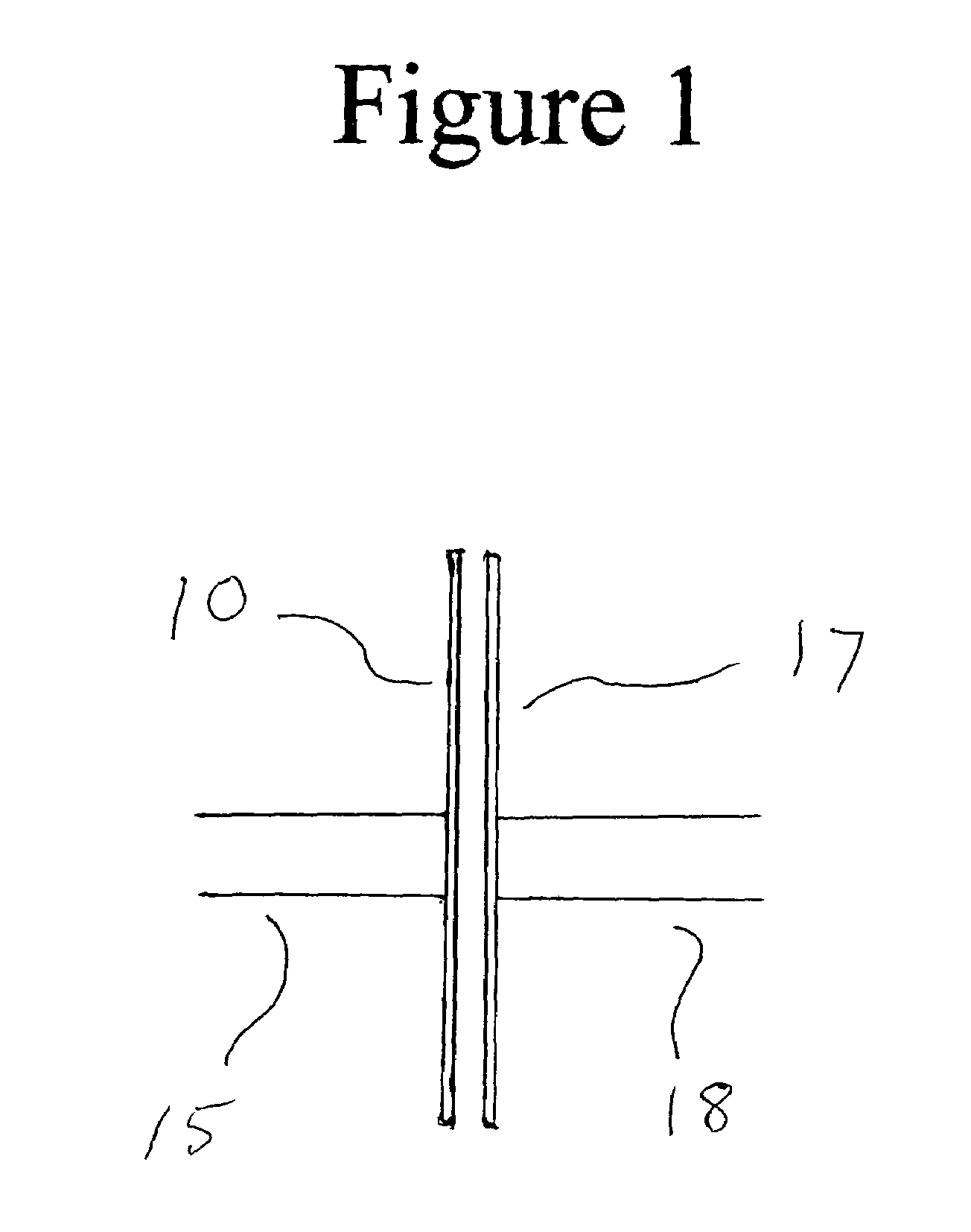Electronic shut off systems
- Summary
- Abstract
- Description
- Claims
- Application Information
AI Technical Summary
Benefits of technology
Problems solved by technology
Method used
Image
Examples
example 1
[0195]Acoustic sensor 1220 is mounted on the port side of boat fuselage 1200 as shown in FIG. 12a. The sensor comprises a flat quartz crystal and a drive / monitoring circuit (located inside the boat) and is adjusted to provide a signal when a submerged solid object presenting more than 1 square inch cross sectional area is placed 15 inches directly in front. Another piezoelectric from a second sensor is mounted on the opposite starboard side of fuselage 1200. The faces (plane of the vibrating piezoelectric crystal) of the sensors are pointed forwards away from the propeller at a 10 degree angle away (toward the starboard and port sides respectively) from the central axis of the boat such that each sensor monitors the water on each respective side of fuselage in front of the propeller.
[0196]The signals from the two sensors trigger an activator. The activator may brake an internal combustion engine or may control one or more electromagnets such as the power to the armature of a permane...
example 2
[0199]In this example galvinometric measurements are made using electrodes distributed on two fin surfaces in a pattern such as shown in FIG. 13a and FIG. 13c. The measurements are input into a comparator that monitors and adjusts for long term (more than 5 seconds) changes in conductivity. When a solid object enters the volume between the upper and lower electrodes, galvinometric measurements indicate a short term change in conductivity and output a signal to a control circuit, stopping the propeller. In further embodiments conductivity between pairs of facing electrodes is used to detect an approaching body, which perturbs conductivity between the left most electrodes before doing so to pairs of electrodes to the right. A multihull watercraft may employ galvanometic sensing by the use of sensors on different hulls in contact with the water in front of a propeller.
example 3
[0200]In this example, boat hull 1550 of FIG. 15b (bottom view) has an attached propeller 1560 and a outside-rear facing piezoelectric sensor 1556. A second sensor 1555 that also faces outside (away from the boat) and towards the rear is mounted on the opposite side from sensor 1560. Both sensors (including their signal analysis circuitry) monitor for intrusion of a solid body and are adjusted to ignore signals from the propeller. In one case, one sensor acts as a transmitter to the other. For example, sensor 1555 emits a sonic signal while sensor 1560 monitors for a reflection of that signal by a solid object. In an embodiment, the two sensors alternate transmission to the other, and obtain more information about the size and / or movement of a detected solid object that way.
[0201]A number of algorithms may be used to extract more information and to improve signal to noise with respect to the propeller. In one such algorithm, a signal obtained from sensor 1555 upon transmission by se...
PUM
 Login to View More
Login to View More Abstract
Description
Claims
Application Information
 Login to View More
Login to View More - R&D
- Intellectual Property
- Life Sciences
- Materials
- Tech Scout
- Unparalleled Data Quality
- Higher Quality Content
- 60% Fewer Hallucinations
Browse by: Latest US Patents, China's latest patents, Technical Efficacy Thesaurus, Application Domain, Technology Topic, Popular Technical Reports.
© 2025 PatSnap. All rights reserved.Legal|Privacy policy|Modern Slavery Act Transparency Statement|Sitemap|About US| Contact US: help@patsnap.com



